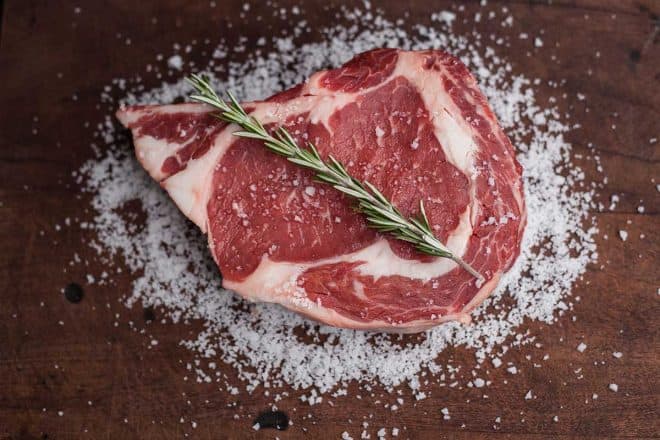Synthetic fats may be as bad (if not worse) for your health as synthetic sugars. Unfortunately, identifying these chemical additives on ingredient panels can be challenging. Synthetic fat production began with the creation of Crisco, the first shortening to be entirely made from vegetable oil. Crisco, that old-time kitchen staple with which Grandma used to make amazing pie crust, was introduced to the market in the mid-1920s, and by the thirties and forties, everyone who was anyone used Crisco. Free cookbooks were even handed out with Crisco recipes. Crisco became the ingredient of higher society! What an amazing marketing feat to have been able to convince people living on farms that they needed to buy a synthetic fat for cooking instead of using the butter and lard they could render from their own animals. Some think that the cardiovascular health problems in the US began with the introduction of processed vegetable oils and fats into our diet.
Since Crisco, many synthetic fats have hit the market. The best-known synthetic fat in production today is known as olestra (OleanTM), which was approved for use in foods by the FDA in 1996. This product was created by the NutraSweet Company by chemically binding a sugar molecule (sucrose) to a fatty acid, resulting in a sucrose-polyester compound that looks, tastes, and feels like fat. Our bodies do not have the necessary enzymes to break down this material and it passes through the digestive tract without being digested or absorbed. In larger amounts, this synthetic material can function as a stool softener and cause malabsorption symptoms, such as abdominal cramping, excessive gas, and loose bowel movements. Olestra intake has also been associated with decreased intestinal absorption of some nutrients and vitamins.
Simplesse, a synthetic “fat” made from egg and dairy whey protein, is currently used in commercially prepared salad dressings, sauces, yogurts, and other cold foods—it can’t be used in hot foods. Simplesse was created by breaking down whey protein molecules into tiny microparticles, one micron in diameter. The tiny size of the particles gives the product its fatty texture and other properties. At the present time, research for potential health effects on this material is lacking. These microparticles are highly processed and I prefer eating packaged foods without nebulous ingredients such as whey protein concentrate, milk protein, or dairy protein, all approved labels for “Simplesse.”
Trans fats, which are fatty acids created by the hydrogenation of unsaturated oils, are inexpensive, stable, synthetic vegetable oils that increase the shelf life of the products that contain them. Trans fats have a less greasy feel than other fats and have been used in all kinds of processed foods for many years. Research has shown trans fats to be associated with the development of cancer, diabetes, heart disease, obesity, and many other inflammatory diseases. Because trans fats have been associated with coronary heart disease and sudden cardiac death, the FDA began requiring labeling of all foods containing trans fats in 2006. Under public pressure, the FDA in 2013 made a preliminary determination that partially hydrogenated oils (trans fats) are no longer generally recognized as safe (GRAS) in human food. A governmental ban on trans fats, approved in 2015, will require US food manufacturers to remove trans fats from all food products by 2018. In preparation, many processed food companies have already changed their recipes and replaced trans fats with other materials thought to be less hazardous.
One such material that food companies are now using is known as interesterified fat. These synthetic fats are generated by using naturally occurring fat molecules, referred to as triacylglycerols, which are composed of three fatty acids attached to a glycerol molecule. Our digestive enzymes recognize these components and are able to break them down during the digestive process. The length and composition of the fatty acids give a fat molecule its physical properties and biochemical characteristics. Using this knowledge, interesterified fats are created biochemically by swapping or rearranging the location and length of the fatty acid chains to create unique molecules with desirable properties, such as a long shelf life. But as research accumulates, these products are being discovered to cause significant health problems.22 There are currently no labeling requirements for interesterified fats. If an ingredient says 0 grams trans fat or no trans fat, check the ingredients and see if the product contains vegetable oil. If it does, you can be certain that the product contains either fully hydrogenated vegetable oil, interesterified fats, or less than 0.5g per serving of partially hydrogenated vegetable oil, which is considered a small enough amount to be labeled 0 grams.
Many vegetable oils are highly processed foods extracted from seeds and other plant materials, margarine included. Margarine was first created in the early 1800s as an inexpensive substitute for butter. Early margarines were made from animal fat, but now, margarine is manufactured from a vegetable oil substrate. The manufacturing process is not as secret as the process for creating high-fructose corn syrup and can be found on the Internet. It is as follows:
Synthetic Fats: The Recipe to Create Margarine
- Seeds from plants such as corn, cotton, soybean, and safflower are collected and the oils are extracted by utilizing hexane, an organic (Organic in this context means that it contains carbon atoms— six carbon atoms in the case of hexane). The process of extraction results in free radicals.
- The oil is steamed to remove most of the impurities, thereby destroying the vitamins and natural antioxidants found in the
- Hydrogen gas is bubbled through the liquid oil in the presence of a catalyst (usually nickel). This forces unsaturated fatty acids to become saturated and solid. The more complete the hydrogenation process, the firmer the finished Margarine undergoes partial hydrogenation to make it semi-solid. The resulting lump of gray grease contains a high content of trans fats.
- Emulsifiers are mixed in with the mixture to remove lumps and the mixture is bleached to change the gray color to
- A second steam cleaning removes any odors that may be attributed to residual chemicals in the mixture.
- Chemists add artificial colors and yellow dye to make the product appear more palatable. The final product is then packaged and marketed as a healthier alternative to butter!
In my home, we use natural fats. Organic butter, coconut oil, olive oil, and even lard are my preferred cooking fats. All lard, however, is not equal. A healthy, pasture-raised, organically raised pig that hasn’t been raised on GMO grain, antibiotics, or hormones is a preferable source of lard. As animal fat accumulates toxins, eating or cooking with lard will potentially expose one to the toxins an animal was exposed to during its life. If you are going to cook with lard, make it yourself by rendering the pork fat and then storing it in a jar. Lard can be frozen, refrigerated, or placed in a clean canning jar on the shelf. If the fat is properly rendered, lard should last for up to a year in the refrigerator or three years in a freezer.









